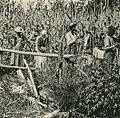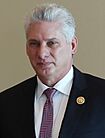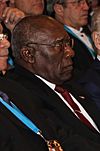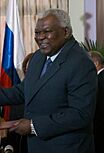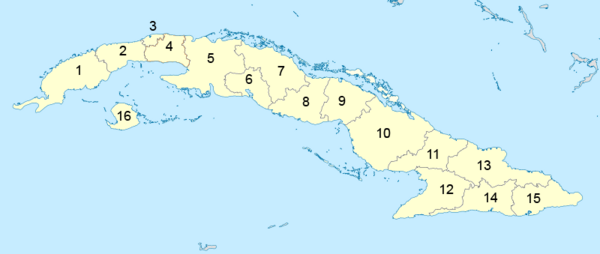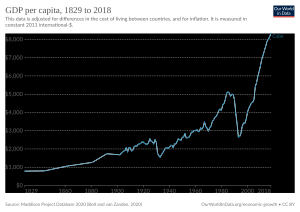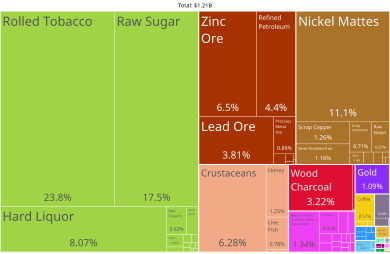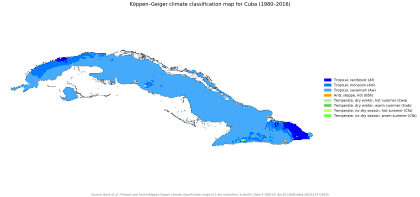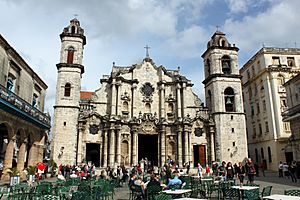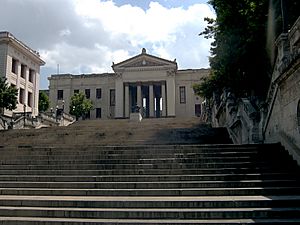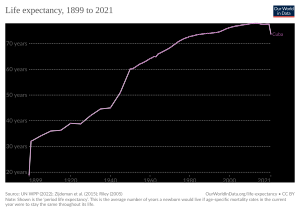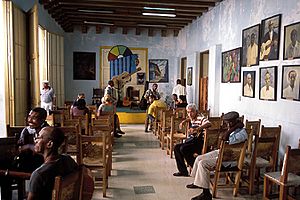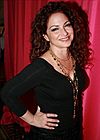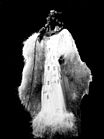Cuba facts for kids
Quick facts for kids
Republic of Cuba
República de Cuba (Spanish)
|
|
|---|---|
|
|
|
|
Motto: Patria o Muerte, Venceremos
("Homeland or Death, We Shall Overcome!") |
|
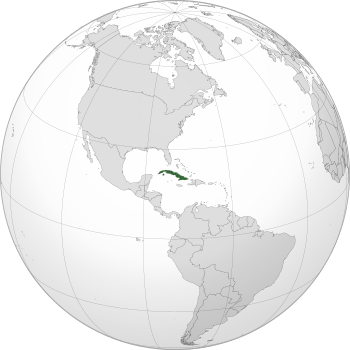
Cuba, shown in dark green
|
|
| Capital and largest city
|
Havana 23°8′N 82°23′W / 23.133°N 82.383°W |
| Official languages | Spanish |
| Other spoken languages | Haitian Creole English Lucumí Galician Corsican |
| Ethnic groups
(2012)
|
|
| Religion
(2020)
|
|
| Demonym(s) | Cuban |
| Government | Unitary Marxist–Leninist one-party socialist republic |
|
• President and First Secretary
|
Miguel Díaz-Canel |
| Salvador Valdés Mesa | |
|
• Prime Minister
|
Manuel Marrero Cruz |
| Legislature | National Assembly of People's Power |
| Independence
from Spain and the United States
|
|
| 10 October 1868 | |
| 24 February 1895 | |
|
• Recognized (Handed over to the United States from Spain)
|
10 December 1898 |
|
• Republic declared (Independence from United States)
|
20 May 1902 |
| 26 July 1953 – 1 January 1959 | |
|
• Current constitution
|
10 April 2019 |
| Area | |
|
• Total
|
110,860 km2 (42,800 sq mi) (104th) |
|
• Water (%)
|
0.94 |
| Population | |
|
• 2023 estimate
|
|
|
• 2022 census
|
|
|
• Density
|
90.7/km2 (234.9/sq mi) (80th) |
| GDP (PPP) | 2015 estimate |
|
• Total
|
$254.865 billion |
|
• Per capita
|
$22,237 |
| GDP (nominal) | 2022 estimate |
|
• Total
|
|
|
• Per capita
|
|
| Gini (2000) | 38.0 medium |
| HDI (2022) | high · 85th |
| Currency | Cuban peso (CUP) |
| Time zone | UTC−5 (CST) |
|
• Summer (DST)
|
UTC−4 (CDT) |
| Calling code | +53 |
| ISO 3166 code | CU |
| Internet TLD | .cu |
Cuba ( KEW-bə), officially the Republic of Cuba (Spanish: República de Cuba). It is an island country comprising the island of Cuba, as well as Isla de la Juventud and several minor archipelagos. Culturally, Cuba is considered part of Latin America.
Cuba is a founding member of the United Nations, G77, Non-Aligned Movement, Organisation of African, Caribbean and Pacific States, ALBA, and Organization of American States. It has currently one of the world's few planned economies, and its economy is dominated by the tourism industry and the exports of skilled labor, sugar, tobacco, and coffee. Cuba has historically—both before and during communist rule—performed better than other countries in the region on several socioeconomic indicators, such as literacy, infant mortality and life expectancy.
Contents
Etymology
Historians believe the name Cuba comes from the Taíno language, however "its exact derivation [is] unknown". The exact meaning of the name is unclear but it may be translated either as 'where fertile land is abundant' (cubao), or 'great place' (coabana).
Fringe theory writers who believe that Christopher Columbus was Portuguese state that Cuba was named by Columbus for the town of Cuba in the district of Beja in Portugal.
Geography
Cuba is located where the northern Caribbean Sea, Gulf of Mexico, and Atlantic Ocean meet. Cuba is located east of the Yucatán Peninsula (Mexico), south of both the American state of Florida and the Bahamas, west of Hispaniola (Haiti/Dominican Republic), and north of both Jamaica and the Cayman Islands.
The main island, named Cuba, is 1,250 km (780 mi) long, constituting most of the nation's land area (104,556 km2 or 40,369 sq mi) and is the largest island in the Caribbean and 17th-largest island in the world by land area. The main island consists mostly of flat to rolling plains apart from the Sierra Maestra mountains in the southeast, whose highest point is Pico Turquino (1,974 m or 6,476 ft).
The second-largest island is Isla de la Juventud (Isle of Youth) in the Canarreos archipelago, with an area of 2,200 km2 (850 sq mi). Cuba is home to six terrestrial ecoregions: Cuban moist forests, Cuban dry forests, Cuban pine forests, Cuban wetlands, Cuban cactus scrub, and Greater Antilles mangroves. It had a 2019 Forest Landscape Integrity Index mean score of 5.4/10, ranking it 102nd globally out of 172 countries.
Area and population
The official area of the Republic of Cuba is 109,884 km2 (42,426 sq mi) (without the territorial waters) but a total of 350,730 km2 (135,420 sq mi) including the exclusive economic zone. Cuba is the second-most populous country in the Caribbean after Haiti, with over 11 million inhabitants.
Largest cities
|
Largest cities or towns in Cuba
According to the 2018 Estimate |
||
|---|---|---|
| Rank | Name | Pop. |
| 1 | Havana | 2,131,480 |
| 2 | Santiago de Cuba | 433,581 |
| 3 | Camagüey | 308,902 |
| 4 | Holguín | 297,433 |
| 5 | Santa Clara | 216,854 |
| 6 | Guantánamo | 216,003 |
| 7 | Victoria de Las Tunas | 173,552 |
| 8 | Bayamo | 159,966 |
| 9 | Cienfuegos | 151,838 |
| 10 | Pinar del Río | 145,193 |
History
-
A map of Cuba made in 1680
-
Black Cubans in Havana during the 1800s
-
Workers on a Cuban sugar plantation
-
Cuban revolutionaries in 1958
The territory that is now Cuba was inhabited by the Ciboney people from the 4th millennium BC with the Guanahatabey and Taíno peoples until Spanish colonization in the 15th century.
From the 15th century, it was a colony of Spain. slavery was abolished in 1886. Cuba remained a Spanish colony until the Spanish–American War of 1898, when it was occupied by the United States and gained independence in 1902.
In 1940, Cuba implemented a new constitution. Mounting political unrest culminated in a coup in 1952 and the subsequent dictatorship of Fulgencio Batista, which was later overthrown in January 1959 by the 26th of July Movement during the Cuban Revolution, which afterwards established communist rule under the leadership of Fidel Castro. The country was a point of contention during the Cold War between the Soviet Union and the United States, and a nuclear war nearly broke out during the Cuban Missile Crisis of 1962. Following the collapse of the Soviet Union, Cuba faced a severe economic downturn in the 1990s, known as the Special Period. In 2008, Fidel Castro resigned after 49 years of leadership of Cuba and was replaced by his brother Raúl Castro. In February 2013, President of the State Council Raúl Castro announced he would resign in 2018, ending his five-year term, and that he hopes to implement permanent term limits for future Cuban presidents, including age limits.
Miguel Díaz-Canel was elected president on 18 April 2018 after the resignation of Raúl Castro. On 19 April 2021, Miguel Díaz-Canel became First Secretary of the Communist Party. He is the first non-Castro to be in such top position since the Cuban revolution of 1959.
Cuba approved a new constitution in 2019. The optional vote attracted 84.4% of eligible voters. 90% of those who voted approved of the new constitution and 9% opposed it. The new constitution states that the Communist Party is the only legitimate political party, describes access to health and education as fundamental rights, imposes presidential term limits, enshrines the right to legal representation upon arrest, recognizes private property, and strengthens the rights of multinationals investing with the state.
In July 2021 there were several large protests against the government under the banner of Patria y Vida. Protests included support from both right-leaning and left-leaning anti-regime Cuban exiles. The song associated with the movement received international acclaim including a Latin Grammy Award.
On 25 September 2022, Cuba approved a referendum which amended the Family Code as well as legalising same-sex marriage and same-sex adoption, making Cuba the first Marxist-Leninist country to do so.
Government and politics
Prime Minister
President of the National Assembly
The Republic of Cuba is one of the few socialist countries following the Marxist–Leninist ideology. The Constitution of 1976, which defined Cuba as a socialist republic, was replaced by the Constitution of 1992, which is "guided by the ideas of José Martí and the political and social ideas of Marx, Engels and Lenin." The constitution describes the Communist Party of Cuba as the "leading force of society and of the state". The political system in Cuba reflects the Marxist–Leninist concept of democratic centralism.
The First Secretary of the Communist Party of Cuba is the most senior position in the one-party state. The First Secretary leads the Politburo and the Secretariat, making the office holder the most powerful person in Cuban government. Members of both councils are elected by the National Assembly of People's Power. The President of Cuba, who is also elected by the Assembly, serves for five years and since the ratification of the 2019 Constitution, there is a limit of two consecutive five-year terms.
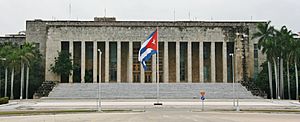
The People's Supreme Court serves as Cuba's highest judicial branch of government. It is also the court of last resort for all appeals against the decisions of provincial courts.
Cuba's national legislature, the National Assembly of People's Power (Asamblea Nacional de Poder Popular), is the supreme organ of power; 474 members serve five-year terms. The assembly meets twice a year; between sessions legislative power is held by the 31 member Council of Ministers. Candidates for the Assembly are approved by public referendum. All Cuban citizens over 16 who have not been convicted of a criminal offense can vote. Article 131 of the Constitution states that voting shall be "through free, equal and secret vote". Article 136 states: "In order for deputies or delegates to be considered elected they must get more than half the number of valid votes cast in the electoral districts".
Military
As of 2018[update], Cuba spent about US$91.8 million on its armed forces or 2.9% of its GDP. In 1985, Cuba devoted more than 10% of its GDP to military expenditures. During the Cold War, Cuba built up one of the largest armed forces in Latin America, second only to that of Brazil.
From 1975 until the late 1980s, Soviet military assistance enabled Cuba to upgrade its military capabilities. After the loss of Soviet subsidies, Cuba scaled down the numbers of military personnel, from 235,000 in 1994 to about 49,000 in 2021.
In 2017, Cuba signed the UN treaty on the Prohibition of Nuclear Weapons.
Law enforcement
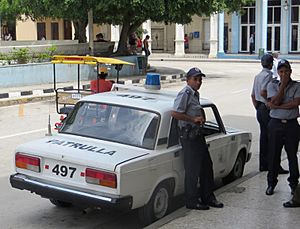
All law enforcement agencies are maintained under Cuba's Ministry of the Interior, which is supervised by the Revolutionary Armed Forces. In Cuba, citizens can receive police assistance by dialing "106" on their telephones. The police force, which is referred to as "Policía Nacional Revolucionaria" or PNR is then expected to provide help. The Cuban government also has an agency called the Intelligence Directorate that conducts intelligence operations and maintains close ties with the Russian Federal Security Service.
Administrative divisions
The country is subdivided into 15 provinces and one special municipality (Isla de la Juventud). These were formerly part of six larger historical provinces: Pinar del Río, Habana, Matanzas, Las Villas, Camagüey and Oriente. The present subdivisions closely resemble those of the Spanish military provinces during the Cuban Wars of Independence, when the most troublesome areas were subdivided. The provinces are divided into municipalities.
Economy
The Cuban has a state-controlled planned economy. Most of the means of production are owned and run by the government and most of the labor force is employed by the state.
Any firm that hires a Cuban must pay the Cuban government, which in turn pays the employee in Cuban pesos. The average monthly wage as of July 2013[update] was 466 Cuban pesos—about US$19. However, after an economic reform in January 2021, the minimum wage is about 2100 CUP (US$17.50) and the median wage is about 4000 CUP (US$33).
The pandemic hasdevastated Cuba's tourist industry, which along with a tightening of U.S. sanctions, has led to large increase in emigration among younger working-age Cubans. It has been described as a crisis that is "threatening the stability" of Cuba, which "already has one of the hemisphere’s oldest populations".
Resources
Cuba's natural resources include sugar, tobacco, fish, citrus fruits, coffee, beans, rice, potatoes, and livestock. Cuba's most important mineral resource is nickel, with 21% of total exports in 2011.
Oil exploration in 2005 by the US Geological Survey revealed that the North Cuba Basin could produce about 4.6 billion barrels (730,000,000 m3) to 9.3 billion barrels (1.48×109 m3) of oil. In 2006, Cuba started to test-drill these locations for possible exploitation.
Tourism
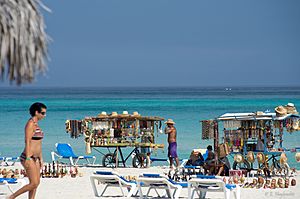
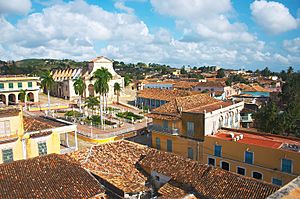
1.9 million tourists visited Cuba in 2003, predominantly from Canada and the European Union, generating revenue of US$2.1 billion. Cuba recorded 2,688,000 international tourists in 2011, the third-highest figure in the Caribbean (behind the Dominican Republic and Puerto Rico).
The medical tourism sector caters to thousands of European, Latin American, Canadian, and American consumers every year.
A recent study indicates that Cuba has a potential for mountaineering activity, and that mountaineering could be a key contributor to tourism, along with other activities, e.g. biking, diving, caving. Promoting these resources could contribute to regional development, prosperity, and well-being.
Some tourist facilities were extensively damaged on 8 September 2017 when Hurricane Irma hit the island. The storm made landfall in the Camagüey Archipelago; the worst damage was in the keys north of the main island, however, and not in the most significant tourist areas.
Climate
Cuba has a semi-tropical climate. That means that the cool ocean winds keep it from becoming hot, despite it being in the tropical zone. Cuba has a wet season and a dry season. The dry season is from November to April, and the wet season is from May to October. August to October is also the hurricane season in the Atlantic Ocean. Because of this, most of Cuba's port cities can be flooded along the coast.
The average temperature is 21 °C (70 °F) in January and 27 °C (81 °F) in July. The warm temperatures of the Caribbean Sea and the fact that Cuba sits across the entrance to the Gulf of Mexico combine to make the country prone to frequent hurricanes. These are most common in September and October.
Interesting facts about Cuba
- According to a 2012 study, Cuba is the only country in the world to meet the conditions of sustainable development put forth by the WWF.
- The Cuban trogon or tocororo is the national bird of Cuba and an endemic species.
- Hedychium coronarium, named mariposa in Cuba, is the national flower.
- The native bee hummingbird or zunzuncito is the world's smallest known bird, with a length of 55 mm (2+1⁄8 in).
- Cuba's literacy rate of 99.8 percent is the tenth-highest globally, largely due to the provision of free education at every level.
- Cuba's high school graduation rate is 94 percent.
- Cuba's life expectancy at birth is 79.64 years (77.29 for males and 82.14 for females). This ranks Cuba 59th in the world and 4th in the Americas, behind Canada, Chile and the United States.
- Cuba has the highest doctor-to-population ratio in the world and has sent thousands of doctors to more than 40 countries around the world. According to the World Health Organization, Cuba is "known the world over for its ability to train excellent doctors and nurses who can then go out to help other countries in need".
Demographics
| Population | |||
|---|---|---|---|
| Year | Million | ||
| 1950 | 5.9 | ||
| 2000 | 11.1 | ||
| 2018 | 11.3 | ||
According to the official census of 2010, Cuba's population was 11,241,161, comprising 5,628,996 men and 5,612,165 women. Its birth rate (9.88 births per thousand population in 2006) is one of the lowest in the Western Hemisphere. Although the country's population has grown by about four million people since 1961, the rate of growth slowed during that period, and the population began to decline in 2006, due to the country's low fertility rate (1.43 children per woman) coupled with emigration.
According to the UN Habitat, Cuba has a 77% urban population, which is approximately 8.89 million people. The rural population in Cuba was about 23% of the total population in 2021. The population of Cuba remains practically constant since the beginning of the 21st century.
Ethnoracial groups
| 2012 Cuban census data | ||||
|---|---|---|---|---|
| Race | ||||
| White | 64.1% | |||
| Mulatto | 26.6% | |||
| Black | 9.3% | |||

Religion
In 2010, the Pew Forum estimated that religious affiliation in Cuba is 59.2% Christian, 23% unaffiliated, 17.4% folk religion (such as santería), and the remaining 0.4% consisting of other religions. In a 2015 survey sponsored by Univision, 44% of Cubans said they were not religious and 9% did not give an answer while only 34% said they were Christian.
Cuba is officially a secular state. Religious freedom increased through the 1980s, with the government amending the constitution in 1992 to drop the state's characterization as atheistic.
Roman Catholicism is the largest religion, with its origins in Spanish colonization. Despite less than half of the population identifying as Catholics in 2006, it nonetheless remains the dominant faith. Pope John Paul II and Pope Benedict XVI visited Cuba in 1998 and 2011, respectively, and Pope Francis visited Cuba in September 2015. Prior to each papal visit, the Cuban government pardoned prisoners as a humanitarian gesture.
Languages
The official language of Cuba is Spanish and the vast majority of Cubans speak it. Spanish as spoken in Cuba is known as Cuban Spanish and is a form of Caribbean Spanish. Haitian Creole is the second-most spoken language in Cuba, and is spoken by Haitian immigrants and their descendants. Other languages spoken by immigrants include Galician and Corsican.
Education
The University of Havana was founded in 1728 and there are a number of other well-established colleges and universities. In 1957, just before Castro came to power, the literacy rate was as low as fourth in the region at almost 80% according to the United Nations, yet higher than in Spain. Castro created an entirely state-operated system and banned private institutions. School attendance is compulsory from ages six to the end of basic secondary education (normally at age 15), and all students, regardless of age or gender, wear school uniforms with the color denoting grade level. Primary education lasts for six years, secondary education is divided into basic and pre-university education.
Higher education is provided by universities, higher institutes, higher pedagogical institutes, and higher polytechnic institutes. The Cuban Ministry of Higher Education operates a distance education program that provides regular afternoon and evening courses in rural areas for agricultural workers. Education has a strong political and ideological emphasis, and students progressing to higher education are expected to have a commitment to the goals of Cuba. Cuba has provided state subsidized education to a limited number of foreign nationals at the Latin American School of Medicine.
According to the Webometrics Ranking of World Universities, the top-ranking universities in the country are Universidad de la Habana (1680th worldwide), Instituto Superior Politécnico José Antonio Echeverría (2893rd) and the University of Santiago de Cuba (3831st).
Health
After the revolution, Cuba established a free public health system.
Today, Cuba has universal health care and despite persistent shortages of medical supplies, there is no shortage of medical personnel. Cuba ranks 30th on the 2019 Bloomberg Healthiest Country Index, which is the only developing country to rank that high.
The Communist government stated that universal health care was a priority of state planning and progress was made in rural areas. After the revolution, the government increased rural hospitals from one to 62. Like the rest of the Cuban economy, medical care suffered from severe material shortages following the end of Soviet subsidies in 1991, and a tightening of the U.S. embargo in 1992.
Challenges include low salaries for doctors, poor facilities, poor provision of equipment, and the frequent absence of essential drugs. Isolated from the West by the US embargo, Cuba developed the successful lung cancer vaccine, Cimavax, which is now available to US researchers for the first time, along with other novel Cuban cancer treatments. The vaccine has been available for free to the Cuban population since 2011.
Media
The mass media in Cuba consist of several different types: television, radio, newspapers, and Internet. The Cuban media are tightly controlled by the Cuban government led by the Communist Party of Cuba (PCC) in the past five decades. The PCC strictly censors news, information and commentary. Journalists must operate within the confines of laws against anti-government propaganda and the insulting of officials, which carry penalties of up to three years in prison. Private ownership of broadcast media is prohibited, and the government owns all mainstream media outlets.
Internet in Cuba has some of the lowest penetration rates in the Western hemisphere, and all content is subject to review by the Department of Revolutionary Orientation. The government of Cuba provides an online encyclopedia website called EcuRed that operates in a "wiki" format. Internet access is limited. The sale of computer equipment is strictly regulated. Internet access is controlled, and e-mail is closely monitored.
Since 2018, access to Internet by mobile data is available. In 2019, 7.1 million Cubans could access the Internet. The prices of connections, since WiFi zones, or mobile data, or from houses through "Nauta Hogar" service have been decreasing, especially since the economic reform of January 2021, when all the salaries increased by at least 5 times, and the prices of Internet remain in the same point. In 2021, it was reported that 7.7 million Cuban people have Internet access. There were 6.14 million mobile connections in Cuba in January 2021.
Culture
Cuban culture is influenced by its melting pot of cultures, primarily those of Spain, Africa and the indigenous Taínos of Cuba. After the 1959 revolution, the government started a national literacy campaign, offered free education to all and established rigorous sports, ballet, and music programs.
Cuisine
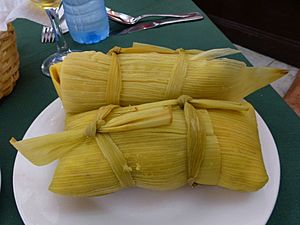
Cuban cuisine is a fusion of Spanish and Caribbean cuisines. Cuban recipes share spices and techniques with Spanish cooking, with some Caribbean influence in spice and flavor. Food rationing, which has been the norm in Cuba for the last four decades, restricts the common availability of these dishes. The traditional Cuban meal is not served in courses; all food items are served at the same time.
The typical meal could consist of plantains, black beans and rice, ropa vieja (shredded beef), Cuban bread, pork with onions, and tropical fruits. Black beans and rice, referred to as moros y cristianos (or moros for short), and plantains are staples of the Cuban diet. Many of the meat dishes are cooked slowly with light sauces. Garlic, cumin, oregano, and bay leaves are the dominant spices.
Literature
Cuban literature began to find its voice in the early 19th century. Dominant themes of independence and freedom were exemplified by José Martí, who led the Modernist movement in Cuban literature. Writers such as Nicolás Guillén and José Z. Tallet focused on literature as social protest. The poetry and novels of Dulce María Loynaz and José Lezama Lima have been influential. Romanticist Miguel Barnet, who wrote Everyone Dreamed of Cuba, reflects a more melancholy Cuba.
Alejo Carpentier was important in the magic realism movement. Writers such as Reinaldo Arenas, Guillermo Cabrera Infante, and more recently Daína Chaviano, Pedro Juan Gutiérrez, Zoé Valdés, Guillermo Rosales and Leonardo Padura have earned international recognition in the post-revolutionary era, though many of these writers have felt compelled to continue their work in exile due to ideological control of media by the Cuban authorities. However, several Cuban writers continue living and writing in Cuba, including Miguel Barnet, Nancy Morejón, Marta Rojas, Fina García Marruz, and Carilda Oliver Labra.
Music
Cuban music is very rich and is the most commonly known expression of Cuban culture. The central form of this music is son, which has been the basis of many other musical styles like "Danzón de nuevo ritmo", mambo, cha-cha-chá and salsa music. Rumba ("de cajón o de solar") music originated in the early Afro-Cuban culture, mixed with Spanish elements of style. The Tres was invented in Cuba from Spanish cordophone instruments models (the instrument is actually a fusion of elements from the Spanish guitar and lute). Other traditional Cuban instruments are of African origin, Taíno origin, or both, such as the maracas, güiro, marímbula and various wooden drums including the mayohuacán.
Popular Cuban music of all styles has been enjoyed and praised widely across the world. Cuban classical music, which includes music with strong African and European influences, and features symphonic works as well as music for soloists, has received international acclaim thanks to composers like Ernesto Lecuona. Havana was the heart of the rap scene in Cuba when it began in the 1990s.
During that time, reggaetón grew in popularity. In 2011, the Cuban state denounced reggaetón as "degenerate", directly reducing "low-profile" airplay of the genre (not banning it entirely), and banned the song "Chupi Chupi" by Osmani García.
Recognized Cuban artists include Los Van Van orchestra, known as "the music machinery of Cuba", pianists Chucho Valdés and Frank Fernández (the latter won the Golden title at the Tchaikovsky Conservatory), and Omara Portuondo, member of the Buena Vista Social Club. Many Cuban artists have won Grammy Awards. Between the youth, Buena Fe is a popular group.
Dance
Cuban culture encompasses a wide range of dance forms. Danzón was the official musical genre and dance of Cuba. Mambo music and dance developed originally in Cuba, with further significant developments by Cuban musicians in Mexico and the US. The cha-cha-cha is another dance of Cuban origin, while the Cuban bolero originated in Santiago de Cuba in the last quarter of the 19th century. Concert dance is supported by the government and includes internationally renowned companies such as the Ballet Nacional de Cuba.
Salsa dancing originated in Cuba and Cuban salsa is danced around the world.
Sports
Due to historical associations with the United States, many Cubans participate in sports that are popular in North America, rather than sports traditionally played in other Latin American nations. Baseball is the most popular. Other popular sports include volleyball, boxing, athletics, wrestling, basketball and water sports. Cuba is a dominant force in amateur boxing, consistently achieving high medal tallies in major international competitions. Cuban boxers are not permitted to turn professional by their government. Boxers Rances Barthelemy and Erislandy Lara defected to the U.S. and Mexico respectively. Cuba also provides a national team that competes in the Olympic Games. Jose R. Capablanca was a Cuban world chess champion from 1921 to 1927.
See also
 In Spanish: Cuba para niños
In Spanish: Cuba para niños






